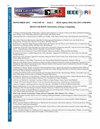Impact of the preprocessing stage on the performance of offline automatic vehicle counting using YOLO
IF 1.3
4区 工程技术
Q3 COMPUTER SCIENCE, INFORMATION SYSTEMS
引用次数: 0
Abstract
Vehicle counting systems detect, classify, and count vehicles with sensors or image processing, providing valuable information for road management. Image processing systems provide detailed information on vehicle flow with adequate lighting conditions and a higher computational cost compared to sensor systems. The image processing systems with higher accuracy require higher computational cost. This feature limits the number of application cases in cities with low technology level. This research analyzes urban vehicle counting using an automatic image processing system using YOLOv5 in the vehicle detection-classification stage and the SORT algorithm in the tracking stage. The study used videos recorded from a pedestrian bridge in Popayan, Colombia, for an exploratory study of the influence of preprocessing operations on the performance of a low-tech vehicle counting system. The study performed a comparative statistical analysis to determine the impact of different settings on system performance. An ANOVA analysis evaluates the incidence of frame cut and reshape on YOLO processing. The results indicate that a 30% cut of the image area prior to YOLO processing produces the lowest weighted average error. In addition, the frame reshape only increases the processing time. The study proposes improvements in the performance of an offline automatic vehicle counting system from the video preprocessing stage.预处理阶段对使用 YOLO 的离线自动车辆计数性能的影响
车辆计数系统通过传感器或图像处理对车辆进行检测、分类和计数,为道路管理提供有价值的信息。与传感器系统相比,图像处理系统能在充足的照明条件下提供详细的车辆流量信息,但计算成本较高。精度更高的图像处理系统需要更高的计算成本。这一特点限制了技术水平较低的城市的应用案例数量。本研究使用自动图像处理系统,在车辆检测分类阶段使用 YOLOv5,在跟踪阶段使用 SORT 算法,对城市车辆计数进行分析。研究使用了哥伦比亚波帕扬一座人行天桥上录制的视频,对预处理操作对低技术水平车辆计数系统性能的影响进行了探索性研究。研究进行了比较统计分析,以确定不同设置对系统性能的影响。方差分析评估了框架切割和重塑对 YOLO 处理的影响。结果表明,在进行 YOLO 处理之前对图像区域进行 30% 的剪切所产生的加权平均误差最小。此外,帧重塑只会增加处理时间。这项研究提出了从视频预处理阶段改进离线车辆自动计数系统性能的建议。
本文章由计算机程序翻译,如有差异,请以英文原文为准。
求助全文
约1分钟内获得全文
求助全文
来源期刊

IEEE Latin America Transactions
COMPUTER SCIENCE, INFORMATION SYSTEMS-ENGINEERING, ELECTRICAL & ELECTRONIC
CiteScore
3.50
自引率
7.70%
发文量
192
审稿时长
3-8 weeks
期刊介绍:
IEEE Latin America Transactions (IEEE LATAM) is an interdisciplinary journal focused on the dissemination of original and quality research papers / review articles in Spanish and Portuguese of emerging topics in three main areas: Computing, Electric Energy and Electronics. Some of the sub-areas of the journal are, but not limited to: Automatic control, communications, instrumentation, artificial intelligence, power and industrial electronics, fault diagnosis and detection, transportation electrification, internet of things, electrical machines, circuits and systems, biomedicine and biomedical / haptic applications, secure communications, robotics, sensors and actuators, computer networks, smart grids, among others.
 求助内容:
求助内容: 应助结果提醒方式:
应助结果提醒方式:


